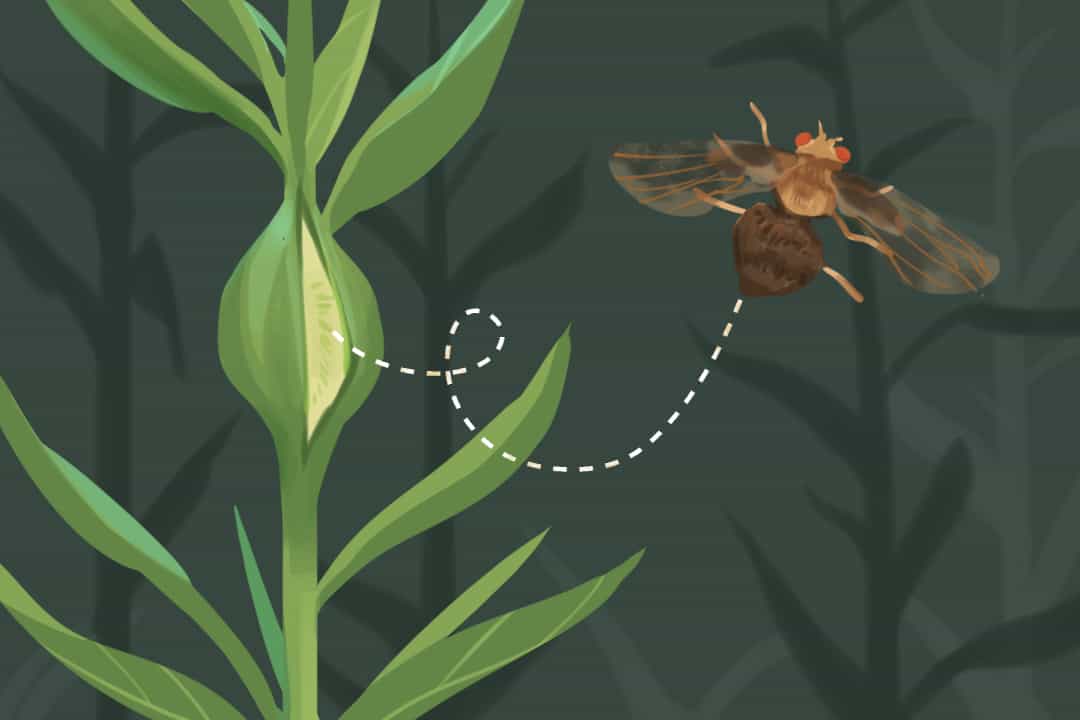Our earth is rife with conflict and cooperation that we often fail to consider. I’m talking about the interactions between plants and insects, groups that account for half of all terrestrial species. These organisms are linked through webs of deception, cooperation, and warfare, and learning about the ways plants and insects interact with each other will forever change the way you look at these hidden organisms.
The little old insect who lived in a plant
Arthur Weis, professor of ecology and evolutionary biology at U of T and the principal investigator at the Weis Lab, investigates how plants respond to the pressures imposed by the climate crisis. His lab also studies the interactions between plants and insects, which range from cooperative to combative.
In an article published in Natural History, Weis described the relationship between goldenrod, a flower characterized by a riot of fluffy yellow spikes, and the goldenrod gall fly, a quarter-inch-long fly found in the eastern and midwestern US. After a female fly mates, she searches for suitable goldenrod plants to lay her eggs. Each time she finds a plant she deems satisfactory, the fly inserts the needle-like organ extending from her rear into the flower and pushes out a single egg.
After the egg hatches, the larva burrows into the stem. By exposing the plant to chemicals in their saliva, “[the larva] induces a tumor on the goldenrod plant,” said Weis, in an interview with The Varsity. The larva then camps out inside the gall, chomping on the tumor and protected from parasitic wasps by a corky outing, until it emerges as an adult fly and spends the next two weeks before its death continuing the cycle.
Plants and their bodyguards
Plants aren’t passive victims — they also manipulate insects for their protection. According to Weis, tomato plants often come under siege from hungry caterpillars. “Tomatoes, when they’re damaged… release a different class of volatile chemicals” that alert nearby parasitic wasps.
These parasitic wasps lay their eggs inside the caterpillars, spelling the caterpillars’ demise. Once the baby wasps emerge from the egg, they eat the caterpillar from the inside out, bursting out as adult wasps.
However, tomato plants don’t always rely on other species of insects to defend themselves. In a 2017 study published in Nature Ecology and Evolution, researchers primed tomato plants for attack and put larvae on the plants. The authors found that the plants they’d primed decreased the nutritional quality of their leaves, leading the larvae to eat each other. The researchers mused that inducing cannibalism is a particularly sound strategy — not only does cannibalism reduce the number of herbivores, but it also makes the remaining larvae less hungry and less likely to eat the plant.
But the caterpillars have found ways to fight back. According to a 2021 article published in the New Phytologist, some caterpillars’ saliva contains enzymes that prevent tomato plants from opening the pores in their leaves. This limits the plants’ ability to release wasp-attracting chemicals, effectively “silencing the alarm.”
Impacts of the climate crisis
According to Weis, the ongoing climate crisis can change the ways plants and insects interact by disrupting overlap between the organisms’ life cycles. “For instance, [if] the plant is very dependent on day length to regulate its growth cycle, but the insect is very dependent on temperature — well, day length is not changing, but temperature [is],” he said. “You can end up with these sorts of mismatches, in which the time in which the plant is the best and the most nutritious may not be the same time when the insect is ready to eat.”
Elevated carbon dioxide levels decrease the nutritional content of certain plants’ leaves, causing herbaceous insects to eat more. In addition, recent studies suggest that exposure to high levels of carbon dioxide may limit plants’ ability to release some of the chemicals they use to defend themselves. This leads me to one of the most convincing arguments for addressing the climate crisis — keeping our world conniving and weird.


